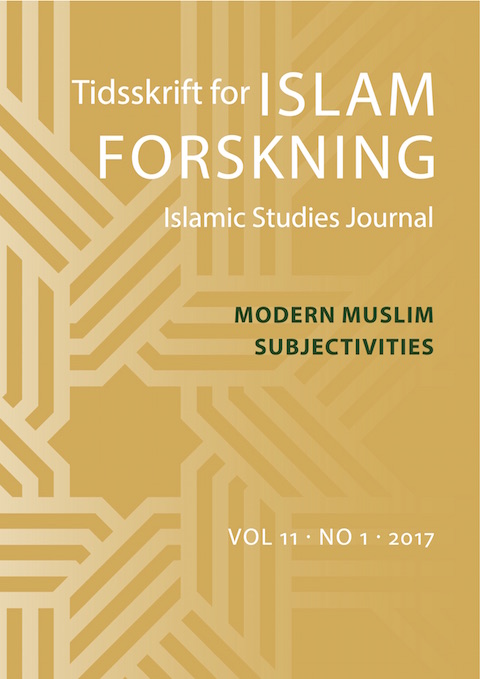Reformbevægelsen: Liberal salafiyya i Marokko
DOI:
https://doi.org/10.7146/tifo.v11i1.102876Keywords:
liberal salafisme, nationalisme, reform, konstitution, demokratiAbstract
Formålet med denne artikel er at diskutere det marokkanske hybridfænomen, liberal salafiyya, sådan som det kom til udtryk i perioden 1930-1960. Fænomenet blev begrebsliggjort af den marokkanske tænker Muhammad ’Ābed al-Jābirī og blev deref ter defineret og afgrænset som en ideologisk skole, der opstod i Marokko i 1930’erne og fortsatte efter Marokko opnåede uafhængighed fra Frankrig i 1956. Al-Jābirī argumenterede for, at den liberale salafiyya voksede ud af en sammensmeltning af vestlig liberalisme og traditionel marokkansk salafisme under det franske protektorat (1912-1956). I Marokko kom den liberale salafiyya til at stå langt stærkere end i resten af den arabiske verden. Det blev et nationalt projekt understøttet af reformister som Allāl al-Fāsī and Muhammad al-Wazzānī, men også af Sultan Muhammad V og det konservative religiøse etablissement. De unge reformister fremlagde en “Plan de Réformes”, som krævede, at marokkanerne skulle indgå i en moderniseringsproces, men det franske protektorat afviste deres krav. Denne beslutning tilskyndede al-Fāsī og al-Wazzānī til at definere deres eget politiske projekt med henblik på at erstatte det traditionelle politiske system med et konstitutionelt monarki. Men efter en mere end fireårtier lang, sej kamp for indførelsen af et parlamentarisk system og moderne politiske institutioner, indså al-Fāsī og al-Wazzānī, at Marokko i den postkoloniale periode ikke var klar til at implementere deres politiske tanker.
This article explores the Moroccan concept of liberal salafiyya between the 1930s and 1960s. The concept was defined by the Moroccan thinker Muhammad ‘Ābed al-Jābirī, who expounded the concept of an ideological school that originated in the 1930s and continued after Morocco regained its independence from France in 1956. Al-Jābirī argued that liberal salafiyya in Morocco arose from the merging of Western liberalism and Islamic traditional Salafism during the French colonial period (1912-1956). However, the ideologies of liberalism and Salafism had a different approach and adaptation in Morocco than the rest of the Arabic-Islamic world. This distinguishes Moroccan liberal Salafiyya from other expressions of Salafism in the Arabic world because it accepted liberalism as compatible with the fundamental principles of Salafiyya. Liberal Salafiyya was not only embraced by the Moroccan reformists Allāl al-Fāsī and Muhammad al-Wazzānī, but also by the Moroccan Sultan Muhammad V and the religious conservative establishment. The young reformists presented a “Plan de Réformes”, where they demanded that the Moroccans should be part of the modernization process. The colonial power rejected their demands. This decision encouraged al-Fāsī and al-Wazzānī to define their own political projects in order to substitute the traditional political system with constitutional monarchy. After more than four decades of activism and struggle for incorporating a parliamentary system and modern political institutions, al-Fāsī and al-Wazzānī realised, that postcolonial Morocco was not ready to incorporate their political views.
Downloads
Published
How to Cite
Issue
Section
License
Scandinavian Journal of Islamic Studies publish under creative commons license BY-NC-SA.





